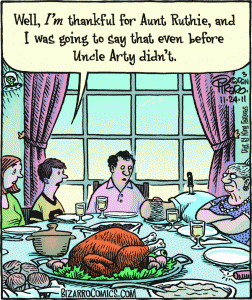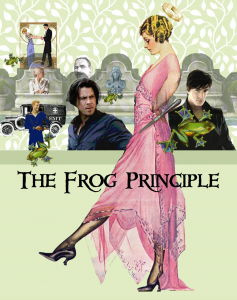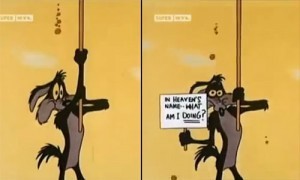Jennifer Crusie's Blog, page 259
December 6, 2014
Cherry Saturday 12-6-2014
Today is Put On Your Own Shoes Day.
(You can see why I tried to give up this tradition.)
I’m going to interpret this liberally as the day to tell people who ask you to do things they can do perfectly well themselves to do those things perfectly well themselves.
Too Much Stuff?
No, this is not a post about my yarn stash.
I’ve been working on Monday Street with Toni, and I have the fory-sixth draft of the opening scene of the opening scene sequence done, and it’s doing everything I want it to, but I think it may be doing too much. So I could use some feedback, beta readers. How confusing is this:
The chafing dish went up in a fireball next to the Defense Minister’s table at Maggie’s Ear and Restaurant right after Maggie told Cat Potter to pick Harry McNally’s pocket.
Cat dropped her tray on the mahogany bar, grabbed a pitcher of water, and ran to dump it on the chafing dish while the college boys at the next table who thought slumming it on Monday Street meant no rules hooted with underage laughter. Green flames whooshed up around the drowned silverplate, and then somebody slapped the lid over the dish, and the flames shot out from under one side, making a beeline toward the Defense Minister as if they had a mind of their own.
Cat thought, Oh crap, magic, and yelled, “Pansy!”
Two tables away, a little blonde hit the ground running and stumbled to a stop by the dessert cart.
The flames went out, leaving the DM with green ash for eyebrows.
“Yes, Cat?” Pansy said anxiously.
“I want to tell you what an excellent job you’ve been doing,” Cat said, shaking ash off her long black waitress dress. “Maggie’s Ear is so much better because you’re here.” That last part at least was true.
“Thank you, Cat,” Pansy said, beaming.
Cat looked closer and saw a fresh bruise by her eye, covered with too much powder.
Pansy pulled away, smiling nervously, and went back to the table whose order she’d been mangling.
“That was not what I expected,” the man with the chafing dish lid said as he looked at the Defense Minister, and Cat saw he was her mark, Harry McNally, known to the waitresses of the Ear as the Square Jaw.
Good. Things were finally going her way.
“I don’t think any of us expected that,” she said, taking the lid from him. Then she put her left hand on his right jacket front as she gazed up at him with only partially faked admiration. It was a good face, she’d decided when he’d first shown up at the Ear two weeks ago. Plain. Simple. Strong. Expressions would have been an improvement, but overall that was a good-looking face.
Too bad he was a vicious thug.
“You were certainly speedy with that lid,” she told him, patting his well-muscled shoulder. “A real live hero.” When he looked down at her hand, she slid his wallet out of his left side breast pocket and dropped it into the pocket of her white ruffled apron, said, “Thank you so much, let me get you a beer,” and got out of the way of Tannenbaum the bouncer who was dragging the college boys into the street with violence. Then she headed back to the bar and her boss, wondering why all the good-looking guys she knew were thieves and killers.
Oh, right. She lived on Monday Street.
I’d give you a list of all the things a first scene has to accomplish and what in particular this one has to do, but I’d rather just get your feedback to begin with. I’ve been looking at this bit for so long, it’s pretty much gibberish to me now.
What do you think?
November 28, 2014
Black Friday Needs Good Omens
Black Friday being the clusterfuck it is, don’t leave the house. Settle in with Pratchett and Gaiman’s masterpiece Good Omens, one of the best books ever written by anybody anywhere anytime. (Well, you can’t read it on GOOD Friday, can you?)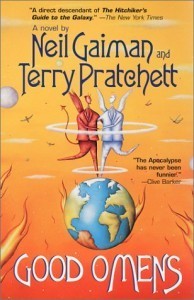
And really good news for Brits (jealousy seeps into post), BBC radio will be doing doing a six-parter version which better show up on iTunes damn quick. I’m already upset I can’t get the Suzy Bakes pink Victoria sponge tin over here, and now you have this. Plus your chocolate is miles better than ours. If anybody over there will be listening to this while eating Maltesers and baking Suzy’s sponge, I DON’T WANT TO HEAR ABOUT IT.
(Actually, I can get the Malteser’s off the net. Ignore my whining.)

November 27, 2014
Happiness Thanksgiving
Happy Thanksgiving, Argh. Tell us what you’re thankful for, no matter how off the wall, so we can spread the warmth and gratitude, even if it’s just “I’m grateful Thanksgiving is over.”
I’ll get us started: I’m grateful for dogs, Diet Coke, and the people in this community. Also chocolate, my grandkids, the family-I-made, and yarn.
How’s about you?

November 26, 2014
Zo’s First Story Retcon Collage
So I haven’t put any more words on paper, but I’ve figured out the major problem with the first story/chapter which was two-fold:
1. Zo wasn’t doing anything except trying to escape with the kids. I need a protagonist with a goal. And now I know how to do that in this story/chapter/whatever.
2. The mood was so grim, and I didn’t know how to lighten it because, hello, somebody’s trying to kill her. So I collaged with the elements I knew were in there, searching for period illustrations for the people, and by George, I think I’ve got it. All the people illustrations are Leyendecker except for one Mucha and one Coleman: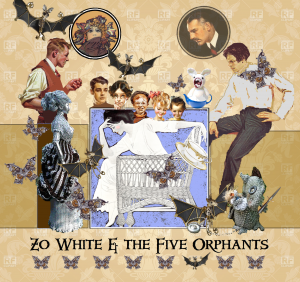
And now back to work. Well, now I make dinner and watch Person of Interest, but THEN back to work.

November 25, 2014
As Requested: Wolfie and Siblings
Here’s Wolfie. He’s very old and he naps a lot. He was a rescue–they’re all rescues–but we’ve been together for thirteen years, so he’s fairly Zen now, except for the times he goes vamp face on me and I have to remind him who’s the Alpha around here. Not that there’s much doubt. I outweigh him by a hundred and fifty pounds.
He looks very peaceful, doesn’t he? He should. He’s sleeping on my crochet with a heated mattress pad underneath and with his head on my pillow. It’s pretty much Dog Nirvana.
Everybody else was mellow, too.
My goal for this week: Get the thermal curtains up on the windows. It’s going to snow tomorrow (Wed) even though it was 67 today. Welcome to New Jersey.

November 24, 2014
Retconning a WIP
That title has to be the most jargon-y post heading in my history. A WIP is a work in progress; retconning means “the alteration of previously established facts in the continuity of a fictional work” (that’s Wikipedia). I am retconning like crazy, including that DSP (Damn Stupid Premise) we were talking about.
Here’s what’s going on (this is all about what I’m working on, so if you’d like to skip to something more interesting, there’s always good stuff on io9):
So first a brief recap:
Many years ago–okay, five years ago–Lani and Krissie and I came up with the idea for a collaboration featuring fairy tale heroines. We brainstormed a basic plot, did collages, developed characters and then . . . wandered off. Later we came up with another collaboration in that world, brainstormed plots, I did a collage and then . . . we wandered off. But I really liked the world so I kept world building and started working on a novel told in short stories/episodes and then I got hit with about forty different crises and it slowed me down considerably. I kept working on it, but I was just not in a romantic comedy fantasy frame of mind, so I was pretty much spinning my wheels. About two months ago, Lani said, “Let’s do an episodic novel set in the Fairy Tale Lies world,” and I said, “That’s what I was trying to do with the Zo stories, I really like the concept, let’s do it,” and Krissie said, “Yes,” and I said, “Let’s invite Toni Causey in, too,” and they both said, “Absolutely,” and we asked Toni, and she said yes. Then Lani got swamped with her own work, and Krissie got overwhelmed with other things, but Toni and I kept working, and having somebody to brainstorm world building with galvanized me, and we started e-mailing obsessively, pulling everything together, and as of today, we have a new world built with a logical system of magic and a cast of characters I love and I have 30,000 words done. Thatsalotta words for starting from scratch two months ago.
Okay, that recap wasn’t all that brief, but I had a lot of ground to cover.
So now I’m going back to the Zo stories with my head screwed on straight for a change and a much clearer view of not only the world, but also of what was wrong with the Zo stories to begin with, which means it’s time to retcon. Before they were fairly light, more screwball comedy, which I wouldn’t have been able to maintain anyway, but with the new stuff I’ve written for the book that takes place six years after the Zo Stories (that would be Monday Street), the mood and tone of the narrative world has shifted. I still want to write the subplot about the girl who got kissed and the kisser who turned into a frog, I just have to base it a little more in reality.
Reality. Always a longshot for me.
And so I came back to what I always have to come back to if I’m going to make any progress: What is this story about?
That is, I can do a rambling summation of this woman and these kids and this guy and this other woman and this other guy but that’s not what the story is about. The story is about this protagonist and this antagonist and the struggle between them that begins on the first page and end, if not on the last page, then on the third to the last page. So I know my protagonist is Zo, but the focus of the story shifts dramatically if the story is mainly about the guy who wants to kiss her or about the guy who wants to kill her. One of those is main plot and one of those is subplot and I have to decide which is which before I can really plot this story.
The truth is, in general I’m not that interested in writing straight romance plots. They’re about growing closer and compromising, and while it’s fun to put that on the page, it tends to make for a pretty low affect in plotting. On the other hand, the romance lover in me gets annoyed when the bad guy keeps making things difficult for the heroine. I want to read the love story, buddy, could you get your head out of the way?
So generally what I try to do is tie the two plots together so that one plot that spurs the other plot: the danger from the Big Bad pushed the lovers together, and the partnership of the lovers makes things worst for the Big Bad, so he increases the danger . . .
But even so, one of them has to dominate, so I’m choosing between Plot One and Plot Two.
Plot One is about an evil politician who wants to kidnap Our Girl and take her to her Evil Stepmother who wants to eat her heart (Our Girl’s name is Zo White because I never waste time with subtleties) by kidnapping her foster children (she had seven but that was too many so we’re working with the five-kid-band) and forcing her to come after them. Several times. Yeah, that one needs work.
Plot Two is about the cop the foster kids call after they break into the politician’s mansion so he’ll see all the illegal things the pol has been doing, which works until the cop sees Zo and pretty much falls at first sight, and then has to half kill himself to win her over throughout the book. Yeah, that one needs work, too.
So I have to pick one, and fix that plot. I can slide a little bit on a subplot, but my main plot is the boat that floats the story: it has to be watertight. I’m thinking I’m going with the suspense plot and play the romance as the subplot. Which is odd because Monday Street is the opposite: romance main plot, suspense support. You gotta go where the story leads you.
And of course, some of you have already noticed the really big problem there: Odolph wants to kidnap Zo, Ecks wants to kiss Zo, WHAT THE HELL DOES ZO WANT? Beside to not be kidnapped–hello, folks, it’s our old friend the negative goal–so that needs work, too.
I’ve been building new collages which is helping hugely. We also moved the time period up ten years so women can wear pants; how the hell did our great-grandmothers manage life in those skirts? Plus the illustrations from the 20s are fabulous: Leyendecker, Coleman, Eastman, and so many more. I really like using illustrations for the main picture even if I fill in with photos. I’m trying to un-photo photos with pasteurization but they’re still photos. At this point, I’m collaging the stories/chapters, and then I’ll move on to the characters, and then back to the chapters. The only thing that’s as good as collaging for freeing up the brain is driving, but I’m paranoid about that now since I rear-ended somebody while thinking about a story. That’s inexcusable.
All of which is to say, I’m working. Also, my brain hurts.
But here’s a collage in progress. See, pictures! I’m thinking of you guys ALL THE TIME.
Now off to reread all the comments on the DSP. Back later.
Oh, and it occurs to me that I have forgotten Cherry Saturday. I’ll put up a poll. Vote on the right if you want to keep it or you want to let it go (if you’re undecided you can vote for more than one thing because it’s that kind of day).

November 16, 2014
Unforgettable Story Moments
I was thinking of Magnum PI today because I’ve just read that Glen Larson died. Magnum was only one of his many creations, but it sticks in my mind because of one moment that was so devastating, I even remember the name of the episode. And it makes me think about what makes a story moment so powerful, so iconic, that it stays with you forever. I think most examples probably come from film, but there have been moments in books when I sat up and gaped at the page, not just because they were such plot game-changers, but because their impact was so huge on my perception of that character.
If you haven’t watched “Did You See the Sunrise?” skip the next couple of paragraphs.
SPOILERS START HERE:
I first saw “Did You See the Sunrise” in 1982, so I was a jaded old married lady by then. Magnum was a fun show to watch: Tom Selleck and John Hillerman snarking at each other made up for the lame mysteries, and the show had a strong cast and story community. There were some brutal Viet Nam flashbacks that I think were there to set up why Magnum was so serious about pursuing a good time now, but generally the show didn’t move anybody out of their comfort zones.
And then they did “Did You See the Sunrise?” Magnum’s Viet Nam past comes back to haunt him in the form of Ivan, a Russian assassin, who blows up Magnum’s car just as one of his friends (and long time recurring cast member and therefore a friend of the audience) says, “Did you see the sunrise this morning? Beautiful.” Bang. At the end, Magnum has Ivan alone in the jungle in this moment. And that was the end of the episode.
The reaction to that was phenomenal. Heroes did not execute people, even assassins. They killed in self defense, to save people in immediate danger, they did not shoot unarmed men in the face. And Magnum was one of the great, iconic heroes of the decade; how could he possibly have done that? And yet, you wanted him to. The scene made the audience complicit in its brutality, its understanding that sometimes fair play is for suckers, and it’s flat-out endorsement of murder as a solution. But mostly, it’s the first time you really understand who Magnum is. The Viet Nam flashbacks tell you how horrible the war was, the hell he went through, but it isn’t until you see those normally laughing eyes go cold that you realize there’s a whole ‘nother dimension there.
It reminds me of another iconic moment I’ve played over and over, the end of Life. Just as the Magnum series kept hitting the damage the war had done to its title character, so Life kept hitting the damage prison had done to its protagonist. You see him healing in the broken places throughout the series, but the cracks are always there, you just don’t know how deep they go until the very end when he says, “Do you know how I survived twelve years in prison?” and transforms into a savage killer before your eyes. A moment later, a corpse beside him, he’s normal again, but your perception of the character is changed forever. (And my admiration for Damian Lewis as an actor went into the stratosphere.)
SPOILERS OVER.
I love those moments. They mean I can go back and read/watch the same story and have it all be completely new. Great episodes have those moments that change everything that came before in that episode/chapter (“Gordon, you’re wearing my shirt”), but the truly iconic moments change entire books/movies/TV series because suddenly the characters have dimensions you never saw before. And of course, I’m trying one of those now in the book I’m doing, so I’m fixating on that.
Which brings me to my question of the day: What are your iconic story memories, the moments when your mouth dropped open and suddenly everything was different, richer, deeper, better?
(Spoilers encouraged, so if you’re a spoiler phobe, don’t read the comments.)

November 14, 2014
In Heaven’s Name, What Was I Thinking?
There’s an old Wile E. Coyote cartoon that I wish I could find again for one two-minute segment. Wile E. is in the desert, standing under a flat outcrop of rock with a stick. For some reason, he’s poking at it. Over and over and over. Then you hear a crack, and Wile E. looks at the viewer and pulls out a sign that says, “In heaven’s name, what was I thinking?” Then the rock collapses on him.
This isn’t the same one, but it’s very close . . .
If they ever film my life, they can just play that two minutes over and over again. Especially they can play it when they’re talking about my story choices. (And my romantic choices. And my real estate choices. And . . . wait, where was I?)
A zillion years ago, three of us were working on a fairy tale collaboration. We came up with a premise and plotted the novel and then we all wandered off, but I kept playing in the world and I built more stories on that premise. Today I went back to those stories to pull them in line with the Monday Street stories since they take place in the same world, and I really looked at that premise for the first time.
In heaven’s name, what was I thinking?
It’s not like I haven’t been here before. Several years ago my agent sold a book to my editor at SMP, the only book I’d never sold. It had never sold for a reason and a big part of that reason was the godawful stupid premise, one of the worst romance premises of all time: the hero makes a bet he can’t get the heroine. Stupidest premise of all time since it guarantees that (a) the hero is a jackass and (b) the Big Misunderstanding is going to crop up over and over again. I did everything I could to get out from under that damn premise including having the hero turn the bet down and having The Big Misunderstanding implode early, but it’s still a terrible, terrible, TERRIBLE premise. After that, the first thing I looked at any time I got a story idea was, “Does this make sense?” closely followed by “Does this mean the protagonists are jerks/stupid/users/criminally insane?” It’s amazing how many premises don’t survive those two questions.
And yet when I went back to the Zo Stories, now with the working title of Paradise Park, there I was again. “Does this make sense?” No. “Does this mean the protagonists are stupid?” Yes. But I liked the stories. I liked the characters, liked who they were, liked what they did. The only real problem was the idea that made them all possible: it was impossible. Not just that the antagonist would have to be dumb as a rock to think that would get him his goal, not just the entire world of the story would have to be asleep at the switch to let him get away with it for as long as he does, not just that one character with a modicum of common sense could put an end to the whole shebang, but that the goal was biologically, physically impossible. Also it didn’t make sense.
In heaven’s name, what was I thinking?
I’d explain it here, but I just tried to explain it to Toni, thinking she’d talk me out of the woods, and I couldn’t even explain it to her. So we tried to reverse engineer it: “People are trying to kill/kidnap all the Riven princesses over the age of 16 and the only way they can escape is to marry a commoner.” Figuring out motivation for killing or kidnapping princesses is easy; figuring out why getting married to a commoner removes the impetus is damn near impossible, unless the princesses have to be removed before they marry royalty, in which case, two questions remain:
How many damn princesses are there?
and
WHY????
Dumbest premise ever. At this point, I’d welcome a hero making a bet.
Make me feel better. What the dumbest premise you ever encountered in a story?

November 13, 2014
A Cast of Thousands . . .
We’re getting far enough along now that we’re looking at our cast of characters and trying to figure out who’s needed and who needs to go; who we’re missing and who we wouldn’t miss if they walked off the page and never came back. My theory of character casts is that you basically have four kinds of characters. This is not a rule, it’s not even a tool. It’s just the way I sort characters.
So four kinds of characters.
1. The Good Guys
This is my protagonist and the people who will die for her. It’s usually a short list, and includes her best friend, her love interest, and possibly one or two others. If everybody is willing to go to the mat for Our Girl, she’s not in any danger. This is why so many romance heroines are orphans.
So for this book, it’s Cat and Keely, our two protagonists, and Harry and Rafe, the love interests/protagonists of the major subplots.
2. The Bad Guys
Otherwise known as the antagonist and his or her minions (minions, heh), the key here is that they out-man and out-power the Good Guys.
Our anatgonist and minions will remain a secret for now. But at the moment there are three of them and one dies in Act Three, so that’s not good. The more minions, the more danger our Good Guys are in.
And the minions have to be powerful. Good hearted twinkies in goggles won’t do it.
The Support Staff
These are the people whose actions influence the plot in important ways, important enough that taking them out would cause damage to the plot. Not cause the plot to collapse, they’re support not main players, but they’re necessary to the story. At last count, we had eleven of those, but stay tuned, we’re not done yet.
The Wallpaper
These are the people who act as setting. If your protagonist is a waitress, she’s going to be working with other waitresses, bus boys, cooks, talking with repeat customers. You need these people as setting, to show how she interacts with her setting, but if one of them walks off the page, no story will be lost. So far we have twelve with names.
Think of the protagonist/antagonist characters as the framework of a building, the part that makes an empty space a structure. Then the support people are drywall; you put a hole in that, you’re gonna have to use some spackle, but the house won’t fall down. And then the setting people are wallpaper; they have no structural role whatsoever, they’re just decoration.
The key, then, is to make sure your major structure is strong and balanced (there’s that conflict box), and that you haven’t drywalled over a door or added an extra layer that makes the structure difficult to navigate, and that the wallpaper doesn’t make the place so busy that people can’t find the light switches.
I think I’ve run that analogy into the ground, so let’s just leave that there.
So at this point we’re looking at protagonist/antagonist balance, and the roles of the support players, making sure they really are necessary to the plot. The wallpaper is the easy part: just don’t call so much attention to them that people think they’re going to be important later, as in, stop describing them in detail. (Reminds me of collaborating with Bob; when I told him he was going to have to stop killing people because it would upset readers who’d become attached to them, he said, “Then stop giving them names.”)
It’s a fine line to walk: put in enough characters so the main characters are living in a fully formed world without putting in so many people that the key players get lost in the crowd which pulls the reader out as she tries to figure out who the hell Rebecca is. (Rebecca must be important, she has black hair, blue eyes, and a name!)
And then there’s the problem of the supporting character who becomes more interesting than the protagonist or antagonist (I wrote this dog named Fred once . . .) so you have to go back and make sure your Good Guys are GREAT Guys . . . .
Peopling your stories is a lot more than making character lists, but making character lists can help keep your people from overrunning your stories.


